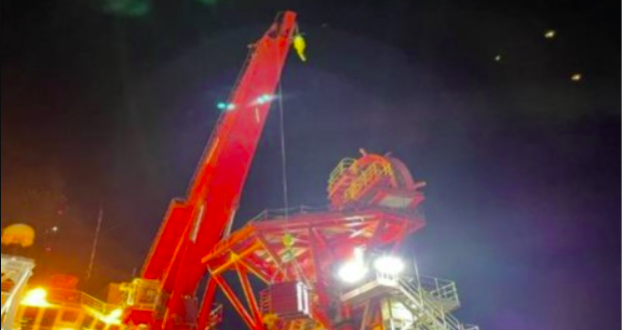As part of its Safety Flashes, IMCA describes a fall of a part weighing 8.5kg over 15m from a pipelay tower to deck, while the tensioner pads were being changed out on a Tiltable Lay System (TLS). Investigation showed the change-out of tensioner pads was considered a routine task and did not require a designated Lift Plan.
The incident
The discarded pads were packed into two dedicated tensioner pad baskets on the TLS tower for transfer back to deck. The crane operator lifted a first basket and placed it in the landing zone on deck.
When lifting the second basket, a higher boom angle was needed in order to clear the TLS. As the basket cleared the TLS, it started swaying.
[smlsubform prepend=”GET THE SAFETY4SEA IN YOUR INBOX!” showname=false emailtxt=”” emailholder=”Enter your email address” showsubmit=true submittxt=”Submit” jsthanks=false thankyou=”Thank you for subscribing to our mailing list”]
This movement was amplified after the basket hit the crane boom, causing a single tensioner pad to fall from the basket down to the main deck.
The displaced tensioner pad fell approximately 15 to 18 meters. There was no-one in the area at the time, and the area of the crane lift path had been barriered off as an exclusion zone.
Main findings
-The dropped object (tensioner pad) resulted from the excessive movement of an unsecured load;
-The change-out of tensioner pads was considered a “routine lift” and did not require a designated Lift Plan (with a specific slew path identified);
-The operation took place at night and the sea conditions were not apparent to the crane operator or banksman when they started the lift;
-Risk assessments:
- Although a risk assessment for routine lifts had been reviewed at the Toolbox Talk (TBT), the risk assessment specific to tensioner pad change-out (which includes the lifting of the baskets) was not reviewed before starting the task;
- The risk assessment specific to the tensioner pad changeout was inadequate – it did not specify a cover for the tensioner basket, nor did it take into account the effect of the sea state/swell on the swing of the load and how this should be factored into the chosen slew path;
- The locking mechanism on the side door of the tensioner pad basket was found to be inadequate and could have quite easily sprung open.
Lessons learned
- An alternate slew path with a high boom angle would have avoided the basket striking the crane and cause increased swing;
- A cover or net fitted to the basket would have prevented the pad being displaced.
Actions taken
- Check all lifting appliances, supports and baskets to ensure they are fit for purpose including that doors have secure locking mechanisms;
- Never overfill and always secure the load in open top containers;
- Crane operators and banksman should work together to identify the best possible routes for moving equipment around the vessel taking sea state/swell into consideration;
- The vessel bridge should always be consulted before starting lifting operations, to ensure the sea state and vessel movements are within limits and where practical a heading to reduce vessel movement is taken.






























































